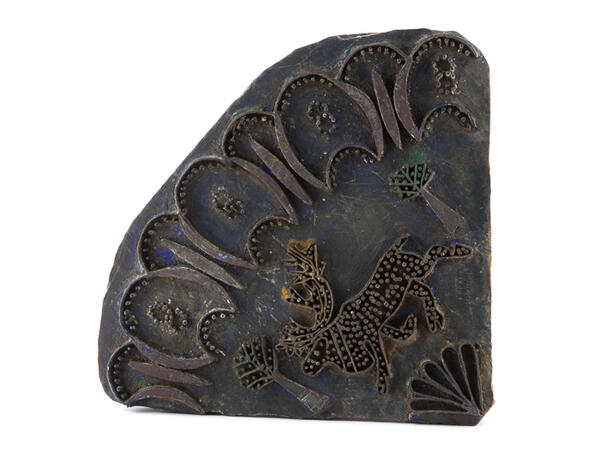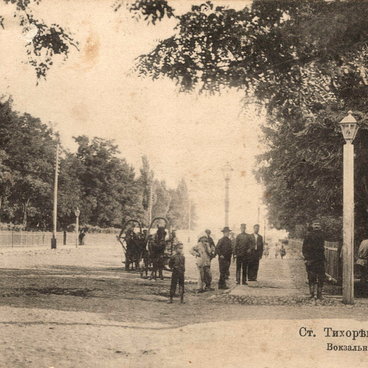The technology of the printed fabric manufacturing has been known in Russia since at least the 10th century. The mass production of printed cloth and the heyday of industries engaged in the printed fabric manufacturing fell on the 18th – the first half of the 19th century.
In the 18th century the large complex prints were widely-distributed in the Russian printed cloth, and in the 19th century – the smaller drawings. The small print stamps became an article of daily use, they were sold at fairs everywhere. For the printed cloth the wooden forms-stamps with a print were made. The manufacture of such forms is a special art of the cutter. There may be used the carved wooden forms, so called patterns, or the coppered blocks – the copper plates with the small nails, where the print is composed from the copper plates or wire. For multicolored drawings the number of the printing forms should correspond to the number of colors. There were masters, the specialists in the vat printing, who could give the fabrics different shades of blue, at the request of the customer. They were called the ‘blue-dyers’. The method itself consisted in the white textiles printing with the wax or clay. Then it was dipped into the vat with dye. At the end of the operation the wax or clay, and in most cases the special compound consisting of wax, starch, gelatin or any resin – so called ‘vapa’, was removed and there was obtained the blue fabric with white lines in the prints. The ‘vapa’ did not allow the fabric to cover with paint in places of the prints. It was too much for the individual craftsman to make the cloth printing, as this required a lot of labor force and the special equipment. It was profitable to band together in the gangs. The gangs took the orders at fairs. To do this they learned how to make the specimens. Nowadays this industry does not have the same scale and is almost replaced by the machine production at the factories. But the hand painting lives on, and the traditions continue. A lot of master classes are held, and there are also the workshops for the manufacture of the hand-printed fabrics.
In the 18th century the large complex prints were widely-distributed in the Russian printed cloth, and in the 19th century – the smaller drawings. The small print stamps became an article of daily use, they were sold at fairs everywhere. For the printed cloth the wooden forms-stamps with a print were made. The manufacture of such forms is a special art of the cutter. There may be used the carved wooden forms, so called patterns, or the coppered blocks – the copper plates with the small nails, where the print is composed from the copper plates or wire. For multicolored drawings the number of the printing forms should correspond to the number of colors. There were masters, the specialists in the vat printing, who could give the fabrics different shades of blue, at the request of the customer. They were called the ‘blue-dyers’. The method itself consisted in the white textiles printing with the wax or clay. Then it was dipped into the vat with dye. At the end of the operation the wax or clay, and in most cases the special compound consisting of wax, starch, gelatin or any resin – so called ‘vapa’, was removed and there was obtained the blue fabric with white lines in the prints. The ‘vapa’ did not allow the fabric to cover with paint in places of the prints. It was too much for the individual craftsman to make the cloth printing, as this required a lot of labor force and the special equipment. It was profitable to band together in the gangs. The gangs took the orders at fairs. To do this they learned how to make the specimens. Nowadays this industry does not have the same scale and is almost replaced by the machine production at the factories. But the hand painting lives on, and the traditions continue. A lot of master classes are held, and there are also the workshops for the manufacture of the hand-printed fabrics.



